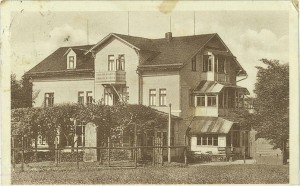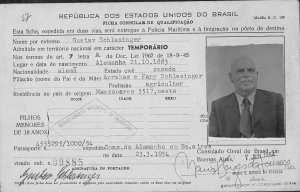See Descendants List: Abraham and Fanni (née Fuchs) SCHLESINGER
We believe that these are images of Abraham and Fanni (née Fuchs) Schlesinger, the parents of Hulda Schlesinger, wife of Karl Grünbaum. While Abraham and Fanni Schlesinger did not live in Themar, their daughter, Hulda, did when she married Karl Grünbaum in 1904 and moved to Themar. Hulda and Karl lived in Themar until 1913.
We came to know about the Schlesinger family through contact with the grandchildren of Karl and Hulda Grünbaum in Australia. They have shared with us photographs and documents that you see on this page; unless otherwise credited, all images comes from the Grünbaum/Meller Collection.
Knowing about Hulda Schlesinger’s family expands our knowledge not only of the Karl & Hulda Grünbaum family in particular but also of the dynamics of Jewish families in southwest Thüringen in general.
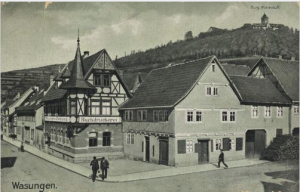
Abraham Schlesinger had deep roots in Thüringen; his grandfather, also named Abraham Schlesinger, had been born in Walldorf in 1778; where the Schlesinger family lived before that time is not yet known. His parents, Kappel (also known as Karl) and Hannchen (née Mai) were both residents of Walldorf/Werra. The Descendants List for the Schlesinger family can be found here.
Abraham’s wife, Fanni Fuchs, came from Burgkunstadt in Bavaria, the daughter of Isaac and Hanna (née Müller) Fuchs. Abraham and Fanni married on 19 October 1871; their first child was born in 1872 but did not live. Three children, Julius, b. 1874; Hulda, b. 1876 and Gustav, b. 1883 all lived to adulthood.
In the 1870s and early 1880s, the family lived in Wasungen, a town with a total population of about 2,500 in 1890 but few Jewish families. An 1895 census, cited by R. Human (p.23), identified a total of 8 Jews — 3 men and 5 women — living in Wasungen.
At some point between 1883 and 1893, the family moved to Schmalkalden, about 14 km northeast of Wasungen. Schmalkalden, a city of about 7,500 residents in 1890, of whom 110 were Jewish. The first piece of evidence of the family’s presence to be found in internet sources is the entry in the 1893 Adressbuch. The family was renting an apartment at Teichstraße 10, and Abraham was identified as a Produktenhändler/trader.

By 1901, Abraham and Fanni were living and working at Am neuen Teich 4. Abraham was identified as a trader, and Fanny (spelled with a ‘y’ in the address book) Schlesinger was identified as the owner of the agricultural products trade. Their eldest son Julius managed a shoe shop at Salzbrücke 19. (He did not own the property.)
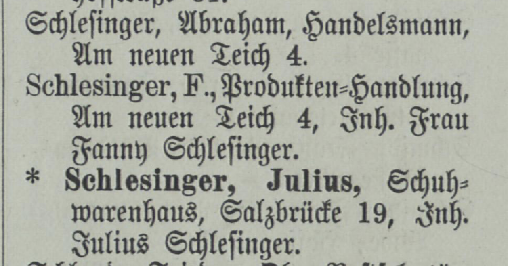
Between 1901 and 1907, Abraham and Fanni made one further move, this time to a property at Kirschenkehle 9. Their youngest son, Gustav, lived with them while Julius now lived at Soldatenprung 3.

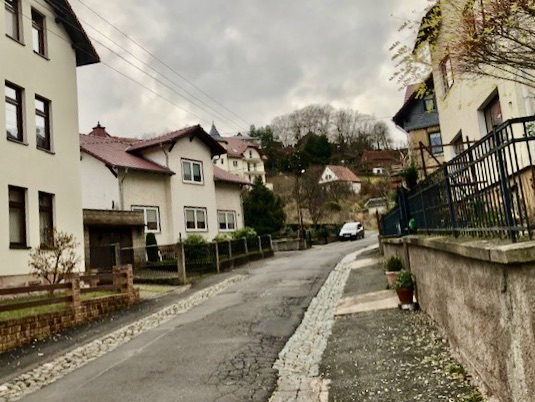
*****
By 1910, the three children of Abraham and Fanni had established their own families. In 1902, eldest son Julius married Hedwig Sulzbacher of Neustadt a/d Aisch in Bavaria. Julius and Hedwig lived at Soldatensprung 3 in the heart of the city. On 3 May 1904, Hulda Schlesinger married Karl Grünbaum of Themar and left Schmalkalden. Karl was the youngest son of Noah Grünbaum and his second wife, Josefine Schlesinger, called Sophine. (Sophine was Hulda’s aunt, the sister of Abraham Schlesinger.) Both Noah and Sophine had died, and Karl and Hulda took over ownership of the Warenhaus N. H. Grünbaum Bahnhofstrasse 150, Themar. The last marriage occurred on 17 August 1910, when Gustav Schlesinger married Frieda Sichel, b. 26 May 1886 in Eckartshausen in Hesse, the daughter of Hirsch and Bertha Sichel. Gustav and Frieda lived at Kirschenkehle 9, and Gustav became part of the management of the Produkten-Handlung business.
The families experienced loss as they started to form their families: in 1902, Hedwig gave birth to a child in February in Neustadt a/d Aisch who, we believe, did not live. On 31 January 1911, Hulda and Karl’s first child, whom they named “Irene,” was born in Themar, but she died after only a few days on 05 February 1911. In November 1911, Frieda Schlesinger gave birth to a boy, Herbert, but he died on 06 February 1912.
The following children lived: on 17 December 1902, Julius and Hedwig had a boy, named Kurt, born in Schmalkalden. On 25 February 1913, a boy, Karl, was born to Gustav and Frieda Schlesinger in Schmalkalden. In February 1916, Ilse Grünbaum was born in Erfurt. (In 1912, Karl and Hulda had moved to Erfurt.)
Both Karl Grünbaum and Gustav Schlesinger joined the German armed forces during WWI although in what capacity is unknown. (It is not known if Julius Schlesinger fought in the war.) 
Fanni Schlesinger died in November 1917 and was buried in the Schmalkalden Jewish Cemetery (see image below). Although we don’t have exact dates, we know that Gustav became owner both of the property at Kirschenkehle 9 and the family business. Abraham continued to live at Kirschenkehle 9.
After the war, Karl owned and operated a painting supplies business in Erfurt. A Julius Schlesinger worked for some time with Karl as the name appears in the 1920 Erfurt Address Book. This may well have been Hulda’s young cousin, 22-year-old Julius Schlesinger, the son of Ferdinand and Lina (née Haas) born in Meiningen.
In 1920 Gustav and Frieda Schlesinger had a daughter, Anni, and on 3 February 1921, Hulda and Karl Grünbaum, had their second child, Kurt, in Erfurt.
The postcards addressed to Ilse Grünbaum, which she took with her when she left Germany in 1939 for England and then on to Australia, indicate the close connection between the Grünbaum family in Erfurt and the Schlesinger families in Schmalkalden. One postcard is addressed to Ilse during the summer holidays which she was spending at the home of her aunt and uncle, Frieda & Gustav Schlesinger, and their two children, Karl and Anni, and she also saw her grandfather, Abraham, who lived in Schmalkalden after Fanni’s death until his death in 1932 when he was buried with his wife in the Schmalkalden Jewish Cemetery. The second card was sent to her by her aunt Frieda and two cousins to her in Erfurt. [For more of Ilse Grünbaum’s postcard collection, please see here.]
*****
As with all Jewish families in Germany, the Nazi takeover of power in January 1933 led to persecution of the Schlesingers. We do not know when exactly the families of Hulda Grünbaum and Gustav Schlesinger began to plan for emigration but we do know that none had emigrated before the November Pogrom of 1938. All four men in the Gustav Schlesinger and Karl Grünbaum families were arrested in the night of 9/10 November 1938 and taken to Buchenwald. Kurt Grünbaum was released on 7 December 1938; Gustav Schlesinger and his son Karl, however, were not released until 4 January 1939. They were all under enormous pressure to leave Germany as quickly as possible.
Between late November 1938 and the outbreak of World War II in September 1939, some were able to flee. Gustav Schlesinger, his wife Frieda and their two children were all able to flee: on 15 April 1939, they arrived in Buenos Aires. Ilse and Kurt Grünbaum were also able to leave, both immigrating into England. Ilse, who left Germany in spring 1939, worked as a domestic in London throughout the war. Kurt, however, was rounded up as an ‘enemy alien’ in London on 1 July 1940 and deported to Australia. He remained there for the duration of the war and then chose to live in Australia.
*****
Karl and Hulda Grünbaum were trapped in Germany and, on 19th September 1942, they were deported to Theresienstadt Ghetto. Karl did not survive and died on 29 March 1943. Hulda Grünbaum, however, did survive, saved by an 11th-hour agreement by Jewish organizations to pay Heinrich Himmler for the release of Jews from Theresienstadt Ghetto. In early February 1945, Hulda and 1200 other Jews arrived in St. Gallen, Switzerland. On 11 November 1945, Hulda wrote to Kurt from the Grand Hotel Brissago, Locarno, where she had been taken to recuperate: “Dear Kurt, I send you the very warmest greetings from beautiful Switzerland. Love, Mutti.”
Sometime in spring 1946, Hulda joined Ilse in London and, on 14 May 1948, the two of them left England to travel to Australia. Hulda Grünbaum died in Australia in 1963. Ilse Meller, née Grünbaum, died in 1981, and her brother, Ken Green, died in 1983. Both Ilse and Ken had married and formed families in Australia and it is thanks to their children that we now know so much about the families of Hulda and Gustav and their parents!
For more detail about Hulda’s story, see The Family of Karl and Hulda (née Schlesinger) Grünbaum.
We have lear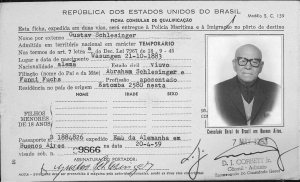 ned some details about the life of Gustav Schlesinger and his family in Argentina. Brazilian immigration records for 1954, 1957, and 1963 have provided a few hints: In the 1954 record, Gustav is identified as a farmer and married; in the 1963 record, he is retired and a widower.
ned some details about the life of Gustav Schlesinger and his family in Argentina. Brazilian immigration records for 1954, 1957, and 1963 have provided a few hints: In the 1954 record, Gustav is identified as a farmer and married; in the 1963 record, he is retired and a widower.
In 1957, Gustav’s daughter, Anni, by now married, visited Brazil.
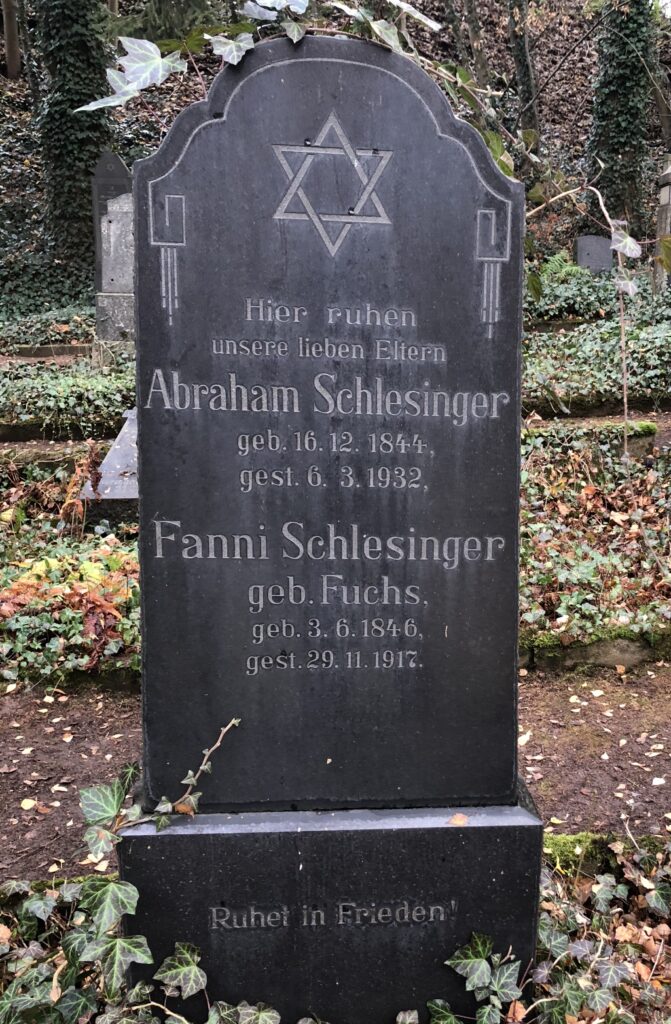
Recent contact between Ilse’s son in Australia with Jewish organizations in Argentina has provided us with new information about Gustav and Frieda and their son Karl. We now know that Karl died in 1964 shortly after his last trip to Brazil.
Sources:
Asociación de Genealogía Judía de Argentina
Günther, Dagmar, Wieland Otto und Ute Simon: Der jüdische Friedhof Schmalkalden. Dokumentation. Erfurt/Schmalkalden 1995-1997, Objekt-Nr. 128; see also epidat.
Hoschek, Jutta. Novemberpogrom 1938 in Erfurt Aus Dokumenten u. Erinnerungen Verlag Vopelius 2014
Jüdische Gemeinde Walldorf Werra (Kr. Meiningen), ”Matrikel, 1839-1938”
,,Mahnende Schicksale,” insuedthueringen.de, 11.11.2011
Nothnagel, Hans. Juden in Südthüringen. 1995. vol 4.
Siegfried Wolf, Juden in Thüringen: Biographischen Daten, vol. 1 & 2
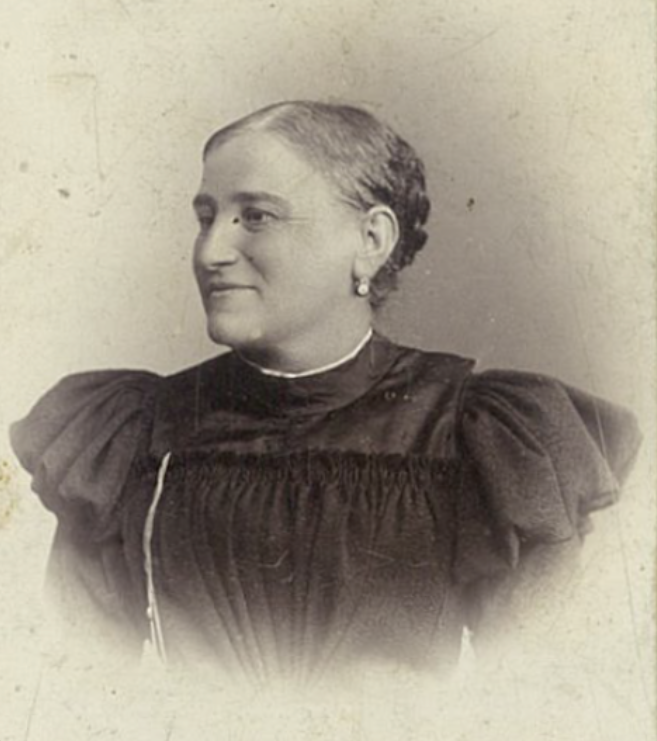
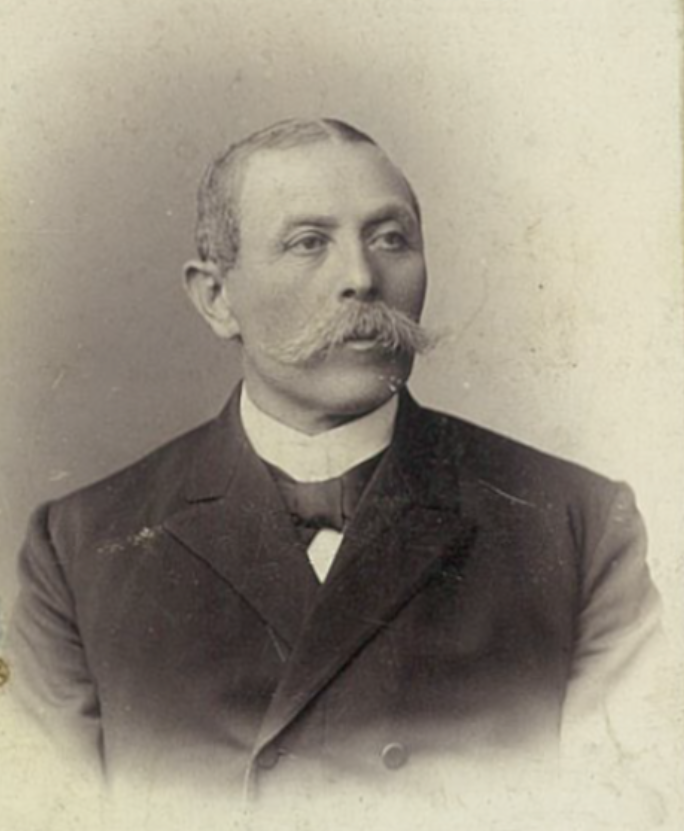
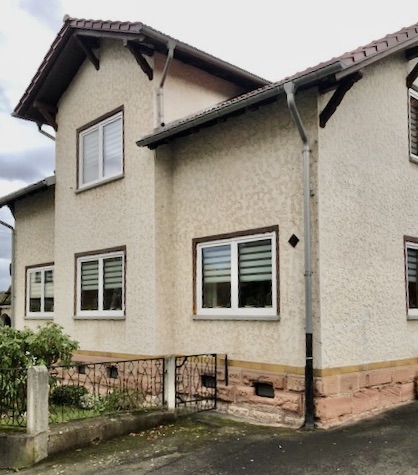

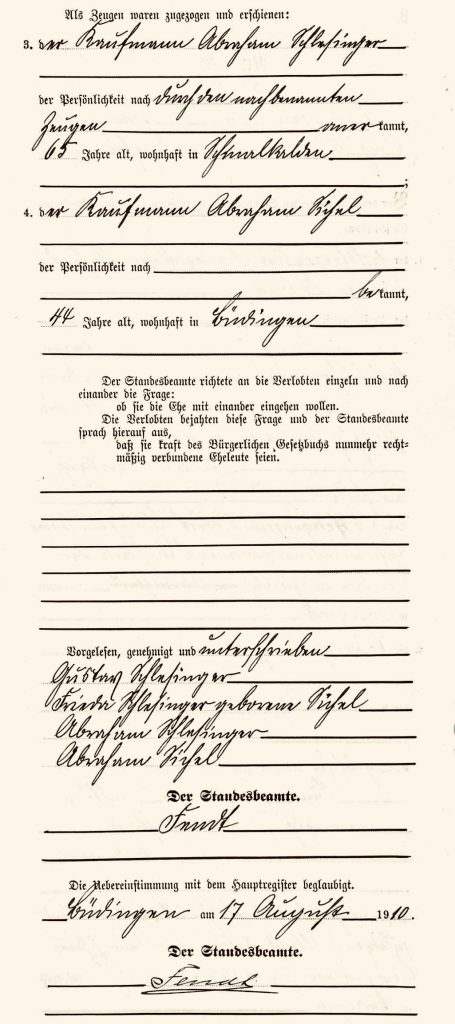
![61-16-GMC-1930-[IG]-PC-2o2](https://judeninthemar.org/wp-content/uploads/2014/08/61-16-GMC-1930-IG-PC-2o2-1024x644.jpg)
![61-16-GMC-1930-[IG]-PC-1o2](https://judeninthemar.org/wp-content/uploads/2014/08/61-16-GMC-1930-IG-PC-1o2-300x195.jpg)
